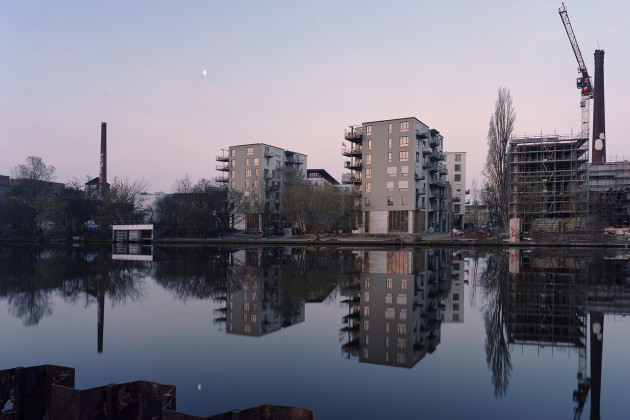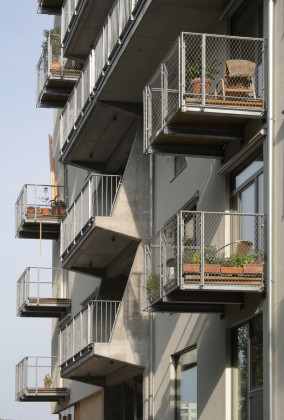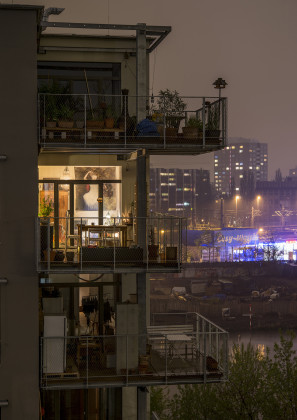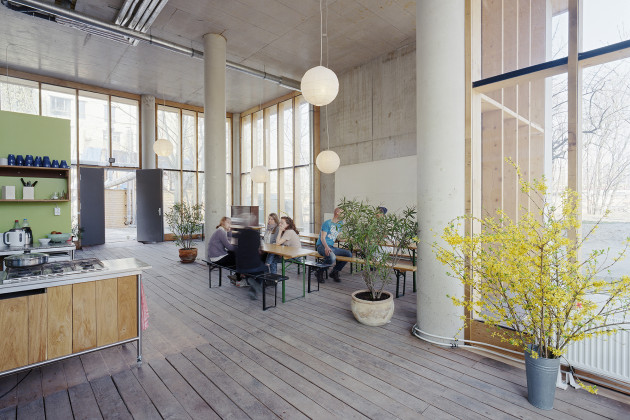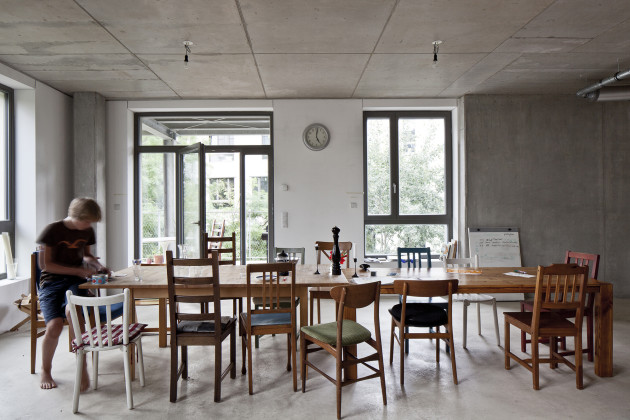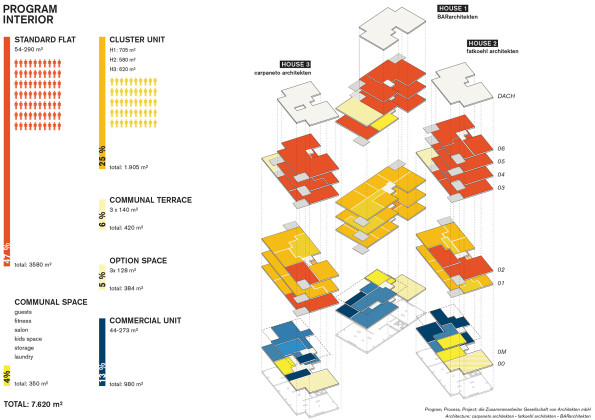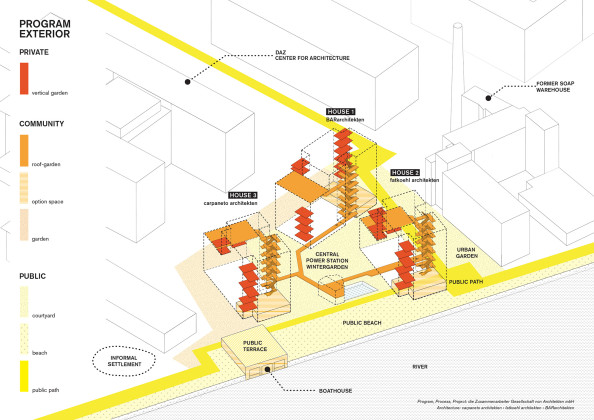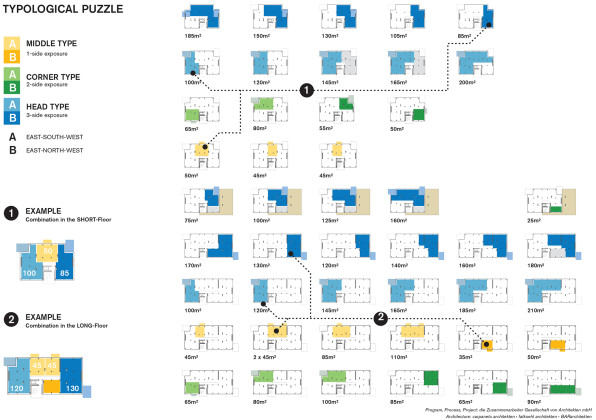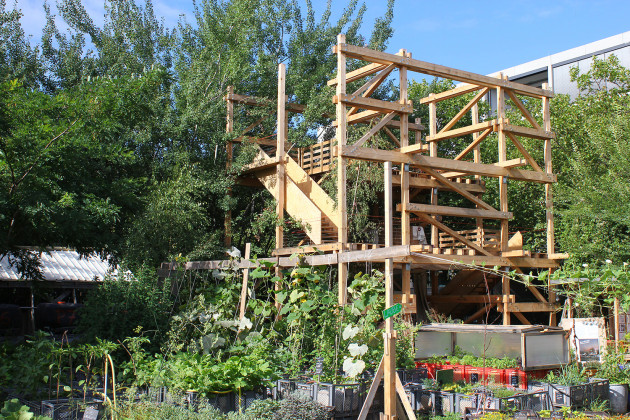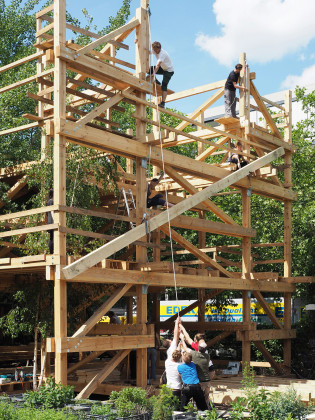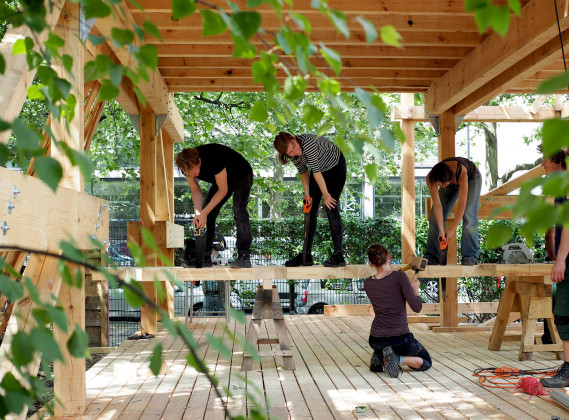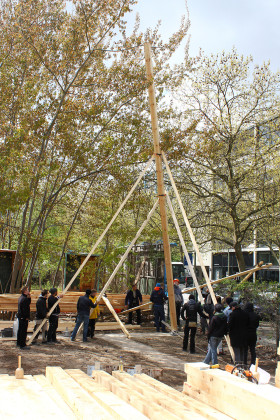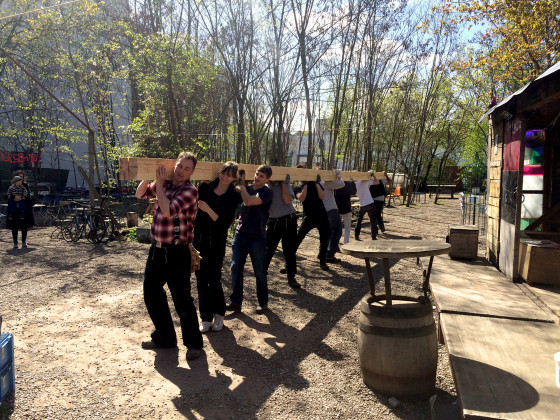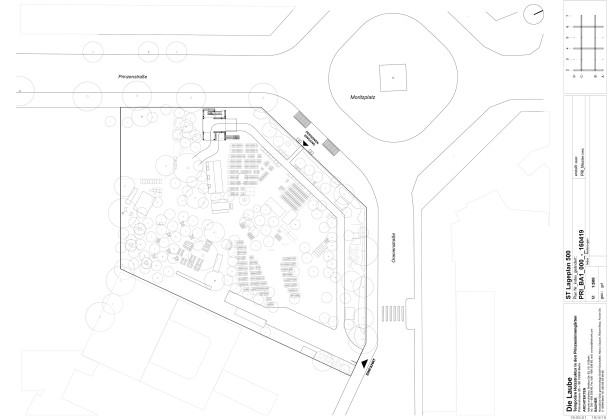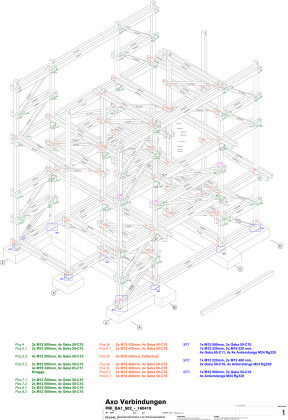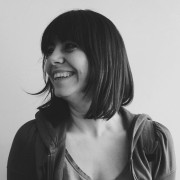Reframing the Social
Hülya Ertaş talked to Florian Koehl on the social agenda of architects today and the alternative ways of realizing projects within the existing social and economical framework
Hülya Ertaş talked to Florian Koehl on the social agenda of architects today and the alternative ways of realizing projects within the existing social and economical framework. Berlin-based architect Koehl develops new models with redefined measures for housing and urban projects through diversity and participation and believes a good city is an affordable one.
Hulya Ertas: I don’t know if you would agree, but after the tide of modernism, I think we are having a new social movement in architecture. In what ways do you think that the social agenda of today’s architects differ from the ones back in the 20th century?
Florian Koehl: The situation in the 60s was very much related to the post-war situation, a lot of cities were destroyed, whole cities had to be rebuilt. As we know, the biggest challenge of modernism was the idea of the separation of functions, Corbusier’s dream of a peaceful world through order. Within that spirit, many architects were asked to plan a complete part of a city, trying to reinvent architecture as a manifestation for a post-war society. So they were asked to be the solution for the new spatial and social conditions of cities, since the increasing growth of cities was a new phenomenon. Compared to today, the architects had a very different role, a sort of a heroic role to reform society and the world, to invent worlds that hadn’t existed before. For them it was a very interesting time, and some of the build ideas were quiet experimental.
Architects today are not asked to be these heroes anymore. Besides exceptions like China, we work formally within the existing fabric of that period, and therefore we have to either develop in between or adapt a lot of these projects regarding the user, we start to cooperate and construct alliances between our ideas and the future owners of buildings. Therefore we need to work much more within the phase zero, the phase before formalization. We also need to consider the time after the building is completed. How will the building exist when it is built? How is it financed? We need to discuss the possibilities of flexibility. What will it mean in 20 years? Will it still be the right model? And how far should we finish a building or leave it to options of change for its inhabitants? I think a lot of these relationships are very pragmatic these days. One thing has to do with many more things than it had to in the 60s. The uses of a building are more compressed and complex, there are multiple uses and there are not ideas of one space for one use. The relationship between programming a building, the alliance to build it, the way of construction and the use of material and its life afterwards is now closely related and interdependent. The next generation of cities should be a co-produced city of opportunities. We call this relationship co-producing urban eco-system.
HE: There was a utopian belief in the 60s; that social housing was designed as a life style, designating that people were going to live here, lunch there etc. Similar to the one in 1920s, with the workers’ houses and company manuals about how workers were going to live there and so on... What is expected from architecture with regards to social housing today? Is it any other house, but with more affordable materials; or does it have any direct link towards the people’ lives in there? And who are the people that are planned to be living in these housings? Are they supposed to be minor communities or else?
FK: It was very interesting when the first companies understood, in the time of industrialization, that the peasant family, migrating from the countryside now had to have a new existence in a city, and they had to feel comfortable in order to be efficient. It was a very clear question: How do I make my workers efficient?
Today, as you can see in politics nor a clear edge of a class neither typical social housing person does exists anymore. You don’t have a worker prototype, there is a huge variety of job models that require very different working hours within a week’s time. You have less typical families, you have a lot of singles or patchwork families, their kids live in different families during the week. You´ll find many people with medium income, but in very insecure situations. A lot of people don’t want to spend money in housing, as they want to spend the money in their business, because they need to be flexible. In Europe, since everyone can move easily, you have a lot of young people who live in very surprising situations. So, for me, today the word “social housing” is the wrong word. The question is much more: How can we allow diversity, how can architectural program and form offer opportunities? How can we make really strong architecture, offering diversity that allows architects to make cities spatially interesting, fun and nice to use and to look at; but also possible to use, offering a lot more than just a place to live. Unfortunately in most of the projects called social housing (even now in Berlin), mass production is the driving force. Most of the topics above are dealt with in the most banal and simplest ways. This attitude has to change.
HE: You have worked on a cooperative housing project. In this project, you have been running a participatory design process. What do you think about this tension between participation, and architects’ professionalism? I compare it to recent discussions in politics of elitism vs populism. It seems a balance is needed between them. How do you manage the participation processes?
FK: Well, this building and my office we are in right now is located in our first co-produced project. We call this model Baugemeinschaft . Each future user who will live in this building after completion is also becoming our client. Rather than building single houses next to each other we stag them on top of each other. From the first day of the project until completion the future inhabitants are part of the process, including decision-making. Why do we do this? When I started my office I immediately got confronted with the contradictory role of the architect: you are asked to be a creative architect while you are responsible for every problem and many times decisions are made in the most banal way to avoid conflicts and risk. But we wanted to question, develop and provoke rather than avoid, therefore we needed another model.
When we built this project, we couldn’t find a bank to invest in it, because no one wanted to build anything in Berlin at that time. So where could we get the money from? We found the model of the Baugemeinschaft and decided that we could ask everyone to pay for their flat as a single person. By doing this, with a house of 10 units, you get 10 mini-investors, the foundation of co-production. The future owners financed their own project. I think, it is a huge step towards the emancipation of future participation in cities. People become banks. Some of the necessary money is sometimes lent from some friends. It doesn’t matter where from, why would I need a real bank? People don´t lose money on profit, they spend their money exactly where they want to invest and also become decision makers.
The next interesting question follows right away: If this is your building and everyone can say something, what exactly do you want to allow the future inhabitants to participate in? There are many different models like R50 Cohousing or our project Spreefeld with very different outcomes from this same process. What do you allow this process? For me, it is very clear that the stronger we are in our positions, the stronger our building will be. Everyone in the project should get a strong role; but this model should also give the user-side a strong role too in order to allow architecture to happen. This is something you have to provide for the participants, while learning from them. People are more interested in participating within the limit of the set rules of co-production in an interesting building rather than being part in a weak project where they are allowed to do anything they like. What we want is the risk of decisions. The model allows us to do many more things necessary for the next generation of cities; and the clients can do many more things that they find interesting. In the end, the city will benefit from a stronger community, the building will benefit because it is not only about money, but also about content. The people will benefit because their place, their neighborhood related to them, built by themselves.
HE: Is there a difference between working on housing projects and public spaces in regard of participatory processes? How did the process work in the die Laube? What was the difference there?
FK: In this project, we tried not to have such fixed program like housing and working; usually such program is very tight, and at the end, every little detail has to be designed in a particular way. We tried to translate the principle of urban gardening into an architecture to allow social relationships through it. Plants are cheap, and planting requires a very low level of skills. Therefore urban gardening became a very popular way of understanding and supporting communities. And for communities, it is very important to be part of the neighborhood, to be able to make something. So we thought, “Could we translate these principles into an architecture?” We decided that the Laube has to be self-made; self-built. The way of making changes the nature of a built existence. It is done by hand, with human force and no machines, as a vertical extension of the garden, three-floors, 10 meters high.
HE: It is kind of a celebration of the community that is already there. I wouldn’t call it a monument but more so a manifestation of the urban garden community in there.
FK: It is an extension of possibilities in the garden. A part of the garden is worried about it, they prefer the idea that the garden is almost invisible. If you would say “monument”, the garden would not like it. As I said, for us, the question is much more: “Could the building be an extension of the garden?” It is made in the same way as the garden, so in the same way, it can be taken over, it can grow. And of course, the garden needs more options for program, they need spaces for seminars or movies. We will put in tent structures, so they can also do projects inside when it rains. That is what they need as well.
HE: Who is your client in there?
FK: The site is rented by a charity called Nomadisch grün. They invented and initiated the Prinzessinnegarden. We met them and proposed our idea of a wooden structure for many possibilities and we found the money for it. So it is completely our invention. The garden is providing the site and also the ideas, programming the input from the garden. We asked the garden to give us as much input as possible, so we could give them a very clear project”. We did not discuss how the structures were made; we just adjusted the structure to the needs of the garden.
HE: But, what is the garden? Is it kind of a municipal branch? I mean, is it a state-structure looking after the gardens; or is it community?
FK: It is a pretty organized, private structure that runs the garden, including a place to offer and sell their food and drinks. Anyone can apply for projects. We call these kinds of charities “Verein”. If you have a football team, your charity makes money but no profit.
HE: I also want to talk about the transformation going on in Berlin; I think it is really interesting that how it is changing in the recent years. There is this vibe about creativity, art, lifestyles and so on in Berlin. And it is not only bringing in tourists; as you said earlier, it is also bringing young people across Europe into the city. We know that if a city gets popular, it carries the risk of getting worse in the long run; even London became a kind of Dubai under the pressure of real estate market. How is the transformation process going on in Berlin with the pressure of popularity and market?
FK: Yes, of course you are right. Every city getting attractive is also getting attractive for profit. Interestingly enough, when the financial crisis in America happened, Berlin became suddenly the place to invest. People were looking for a place where they can invest money in real stuff, not in the stock market. In 2009 or 2010, they just bought everything. When the crisis happened in the rest of the world, Berlin suddenly was the one “El Dorado”, because it was so cheap. And of course, as the consequence, prices and rents rose in the city. The pressure on the market is changing. The models which we used for projects including buying the site are more or less impossible now, at least in the inner part of city since we can’t find sites anymore. In the book “Self Made City” we showed approximately 50 projects and they are all privately-owned, all the projects were completed without the intervention of the city. At that time the city did not care about housing or working, there was no need for a market, since Berlin was completely bankrupt. Now, the city starts to be engaged, but they have no clue yet to decide what will happen in possible sites, how to support the Baugemeinschaften or the cooperatives.
HE: I remember reading some news about having a quota for the rent prices and the recent AirBnb ban. I think they are trying to regulate in a way, so it would not get too expensive to live in Berlin.
FK: About 75 to 80 percent of all the people in Berlin are still renting flats. Germany has always been very strong in maintaining the rent-system; and of course these are all also party-voters so the government will try within the law to regulate the peak of rents. So, how efficient is this tool, how clever is the system of renting? The tenant pays money to the landlord, a similar model to pay your loan to a bank. I take a loan in a way which allows me to live in a place. I think there are more clever models for people to live in the city. For instance in cooperatives, after certain years, if you have paid enough, you payed off the land collectively. So you don’t need to pay for it anymore. In cooperatives, rent should go down every year, because you have paid off the investment cost. The only thing you have to pay for now is to allow the cooperative to make new projects, and also to pay for the running and repairing costs. If you have a building, which usually lasts for a hundred years, you should, at the end, almost pay no more rent. For someone who wants to make money, of course, it becomes interesting at exactly that moment, the moment where you actually pay rent into someone’s pocket although you don’t need to pay in terms of the economy of the building. So the cooperative is an interesting model, because at the end, if you pay less rent, you have more money to spend for other things. This is definitely a more interesting economy for a city: to keep the money for things that make the city interesting; for production, for creativity, rather than only for living.
HE: Are these houses that people are renting, belong to the city or to private owners?
FK: Since a couple of years, city owned housing society has started to build a lot of projects, they are usually owned and run by themselves. But most buildings in Berlin are privately owned.
HE: You told me about that the way they use the buildings afterwards is really important to you. Most of the time, you start the project with some hopes for the impact of the architecture, and people, and so on. How long do you follow the projects after they are done realized, for short and long term effects?
FK: Well; our first building is the one we are in right now. I had buy this space myself, since at the time, we couldn’t sell the space for a shop or an office-use. No one wanted the space because there was no market for it, and there was also no platform to sell it. Since I wanted to have this ground floor to be public I had to realize it myself. We are pretty realistic about these projects. When we presented this project, we told the future inhabitants that the building itself is no guarantee for any harmony, “we were prepared for conflicts.” We did not know what would happen if a bunch of people lived together for the next years. We are still today very respectful to the sheer fact that we actually talk to each other. This is a wonderful place here, we are very lucky. It works well, people are very generous. In other places where we have younger and more fearful people, we have other experiences. People are worried that they have to share things and it might generate a conflict.
HE: For example, what happened to the ground floor of the Spreefeld? You have communal space there. How is it being used now?
FK: It is very active. One area is a kindergarten. Therefore the public space is shared by the kids. In addition there are lots of offices and spaces for open use; there are of course people that live there, but there are also lots of people who just come by for work or for sitting at the river. Sometimes they even put up a tent to stay for a night. It was a huge issue, to make this place active; and at the same time, you can’t just give away all the ground floor to the public. In order to have some privacy, we also created spaces of compensation, big balconies and communal gardens for the missing privacy in the garden. If you take something, you have to offer something as a return. I think that relates to what you said about the difference with the sixties: it is more pragmatic and negotiated with the future users.
HE: The general rhetoric on social architecture sometimes gets too emotional; but when I am talking to you, it seems so realistic.
FK: One has to think about the economy behind the projects and also about the economy of space. For instance, in the Spreefeld, we designed a lot of cluster-flats where people live together. They share a big kitchen, big living room and they have very small flats or rooms for themselves. So, they pay less rent for a lot of space. They have their own space, but they also have common spaces. This model allows people who can’t or do not want to spend all their money for rent and yet live within generous space. I think the social housing is the wrong word, because it is quite negative. How would you call this type of new housing? There are a lot of people who, in my income, including myself, don’t make too much money. In Vienna, I would also be allowed to live in a social housing project; because the level is different, the lower rent is also for the middle class. Their idea of social housing is more about affordability.
HE: On the other hand, the middle class is getting much more dispossessed.
FK: Yes, the middle class is also in the danger of being pushed out of the city, therefore it would be cleverer to make models for everybody. Just think about the models, realize them, and give this form of architecture a new name.
HE: And what about the term affordable housing, I am not sure it is the right word either.
FK: The word is pretty technical, yet affordability can mean a lot. For instance, if you can share a flat with a common, larger kitchen, space becomes very affordable. Unfortunately one huge impact on costs is the price of the land. You can build a cheap building, but there is a certain limit at which you can’t make it any cheaper. One need to decide where architecture can still exist within the limits of the cost, where one can play. Shared flats, smaller flats, flexible and adaptable flats for nomadic people etc. You have to think about other ways in which people can share, and then also you have to think about the model of it. Why is rent rising? Why doesn’t it get cheaper, rather than more expensive? It should get cheaper because you pay off the building. It would be nice to hear “Yes, flats get cheaper in Istanbul.” Then someone would say “What? This city must be wrong!” But it is what everyone should expect.
HE: It is almost like you can show off with your city if the rents are high.
FK: It sounds more successful. But it is stupid. Think about it, it is very stupid. But if you would say our city is strong because it is affordable and therefore it is allowing opportunities; probably one would say “Mm, convincing but not realistic.” I think it could be very realistic.
HE: It is not cool to live in a cheap city.
FK: I guess, it still has a long way to go, in most interesting cities it would be really important to change but it does not happen, unfortunately.
Related Content:
-

David Alan Chipperfield Receives the 2023 Pritzker Architecture Prize
-

Social Housing in Ibiza
-

From Earth to Women
-
No Easy Answers, But All The Right Questions
Sebnem Soher talked with Tiago Mota Saraiva, one of the members of architectural cooperative Ateliermob, about building collective know-how and networks that bring stakeholders together.
-
New Forms of Conviviality
Hulya Ertas talked with Cristina Gamboa, one of the founder members of Lacol, on their approach as an architecture cooperative
-
RSVP for Location
The transformation in the urban structure that led to social and cultural change has also initiated a new form of underground party scene, driven by the growth of the electronic music
-
Participatory Design is the New Black
Cities are complex organisms that are able to develop themselves at an incredible speed and in different conditions.
-

Out-of-the-box
 25.04.2017
25.04.2017



